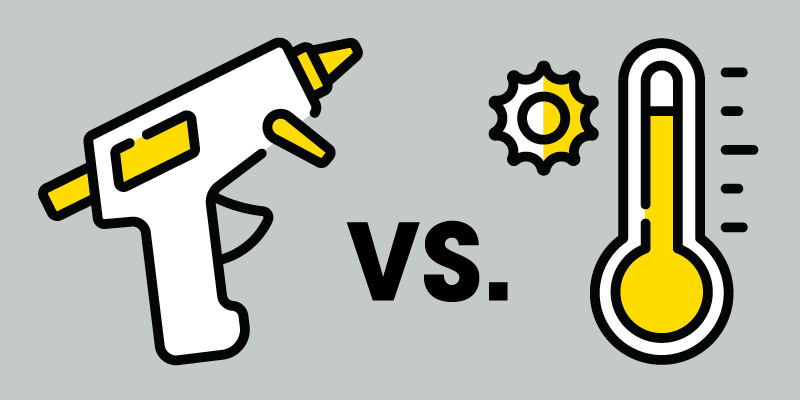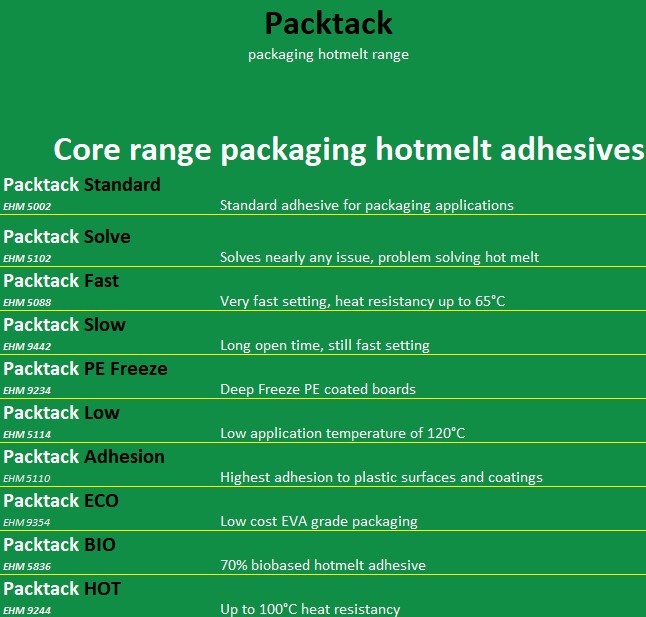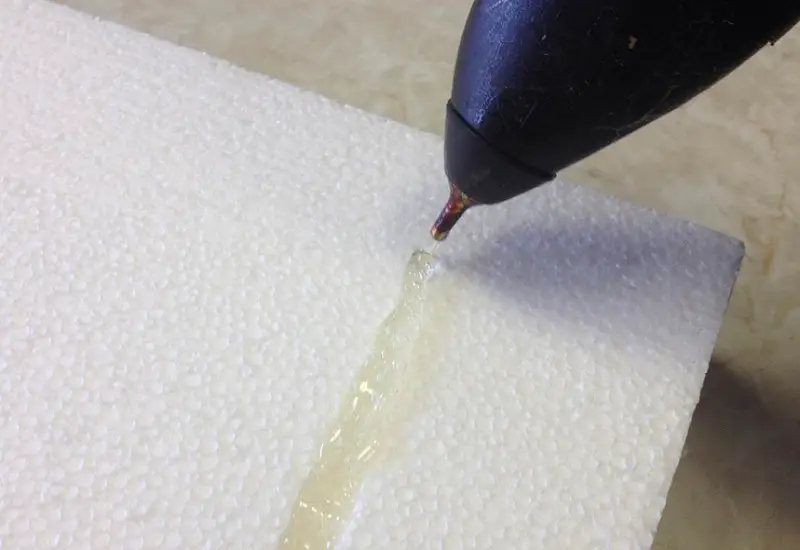Hot glue melts at a temperature of around 350°F (177°C). Hot glue, also known as hot melt adhesive, is a versatile adhesive that is commonly used in various crafts, DIY projects, and industrial applications.
It is a thermoplastic adhesive that becomes soft and pliable when heated, allowing it to bond to different materials. The melting point of hot glue is important to know when using it, as it ensures that the glue is heated enough to become liquid and bond effectively.
By heating the glue gun to the appropriate temperature, the hot glue can be applied and secured in a precise and efficient manner. Whether you are working on a small craft project or a larger industrial application, understanding the melting point of hot glue is crucial for successful bonding.
Contents
Introduction To Hot Glue
Hot glue is a popular adhesive that melts at different temperatures depending on the type of glue gun. Generally, hot glue melts at temperatures ranging from 120 to 220 degrees Celsius. It is essential to use the correct temperature for the particular project to ensure a strong hold.
Hot glue is a type of adhesive that is widely used in various industries, including crafts, DIY, woodworking, packaging, and more. It is a versatile adhesive that can bond different materials, such as plastic, wood, metal, fabric, and glass.
Hot glue is easy to use, dries quickly, and provides a strong bond. In this article, we will discuss the composition and uses of hot glue, as well as its popularity in crafts and DIY.
Composition And Uses
Hot glue is made of thermoplastic polymer that melts when heated and solidifies when it cools. The most common type of hot glue is made of EVA (ethylene-vinyl acetate), which is a non-toxic, low-odor, and flexible material.
Hot glue is available in different forms, such as sticks, pellets, and cartridges, and can be applied with a hot glue gun or other applicators.
Hot glue is widely used in various industries, such as:
- Woodworking – to bond wood pieces together
- Packaging – to seal boxes and packages
- Automotive – to bond parts and trim
- Construction – to bond tiles and flooring
- Electronics – to fix and insulate wires and components
Popularity In Crafts And Diy
Hot glue is extremely popular in the crafts and DIY industry due to its ease of use, versatility, and affordability. It is used in various projects, such as:
- Scrapbooking – to attach photos and embellishments
- Card making – to create 3D effects and attach embellishments
- Jewelry making – to attach beads and stones
- Home decor – to create wreaths, garlands, and other decorative items
- Clothing and accessories – to attach patches, buttons, and other decorations
In conclusion, hot glue is a versatile adhesive that is widely used in various industries, including crafts, DIY, woodworking, packaging, and more.
It is made of thermoplastic polymer and can bond different materials. Its popularity in crafts and DIY is due to its ease of use, versatility, and affordability.
The Science Of Adhesives
Hot glue melts at temperatures typically ranging from 120 to 220 degrees Celsius, making it a versatile adhesive for various applications.
Its melting point allows for easy application and bonding of materials such as wood, plastic, fabric, and more. Whether for crafts or repairs, hot glue provides a quick and reliable bonding solution.
Adhesive Types
There are different types of adhesives for various applications and materials.
Thermal Properties
Understanding the thermal properties of adhesives is crucial for effective bonding.
Adhesives play a crucial role in various industries, from crafting to construction. They work by creating a bond between two surfaces, enhancing strength and durability.
Adhesive Types
There are two main categories of adhesives: Reactive and Non-reactive. Reactive adhesives require a chemical reaction to cure, while non-reactive adhesives cure through evaporation or cooling.
Thermal Properties
The temperature at which hot glue melts is essential to its effectiveness. Hot glue typically melts at around 120 to 150 degrees Celsius, making it suitable for a wide range of bonding applications.
Hot Glue Melting Points
Hot glue melting points play a crucial role in determining the effectiveness of this adhesive in various applications. Understanding the temperature ranges at which hot glue melts, as well as the factors influencing its melting point, can help ensure successful and durable bonding in DIY projects, crafts, and industrial settings.
Standard Temperature Ranges
The standard temperature range for hot glue melting typically falls between 250°F to 380°F. However, different types of hot glue may have specific melting points within this range, so it’s essential to refer to the manufacturer’s guidelines for precise temperature requirements.
Factors Affecting Melting Point
Several factors can influence the melting point of hot glue, including the chemical composition of the adhesive, the presence of additives for specific applications, and the quality of the glue gun being used.
Additionally, environmental factors such as humidity and ambient temperature can impact the melting behavior of hot glue.

Types Of Hot Glue Sticks
Hot glue sticks melt at specific temperatures depending on the type. Low-temp glue sticks melt around 250°F, while high-temp ones melt at 380°F. It’s crucial to use the right type for your project to ensure a strong bond.
When it comes to hot glue sticks, there are various types available to suit different needs. Let’s explore two key categories: clear vs. colored and size and shape variations.
Clear Vs. Colored
Clear hot glue sticks: Ideal for projects where the adhesive needs to be invisible once dried.
Colored hot glue sticks: Perfect for crafts where you want the adhesive to add a pop of color.
Size And Shape Variations
Standard size: The most common size, suitable for general crafting and DIY projects.
Mini size: Great for precision work and delicate projects that require a smaller amount of adhesive.
Different shapes: Some hot glue sticks come in unique shapes like flat or triangular, catering to specific application needs.
Specialty sizes: Available in larger diameters for heavy-duty projects that require a higher amount of glue.
Hot Glue Guns
Hot glue guns are versatile tools used for a variety of crafts, DIY projects, and repairs. They are popular among hobbyists, artists, and professionals due to their ease of use and strong adhesive properties.
Whether you are bonding materials together or adding decorative elements, a hot glue gun can be your go-to tool.
Choosing The Right Gun
When it comes to hot glue guns, choosing the right one for your needs is crucial. There are various factors to consider, such as the size of the gun, the wattage, and the type of glue sticks it accommodates.
Here are a few key points to keep in mind when selecting a hot glue gun:
- Size: Hot glue guns come in different sizes, typically classified as mini, standard, and industrial. Mini glue guns are perfect for detailed crafts, while standard and industrial guns are better suited for larger projects.
- Wattage: The wattage of a hot glue gun determines how quickly it heats up and how fast it dispenses the glue. Higher wattage guns are ideal for heavy-duty applications, while lower wattage guns are suitable for lighter tasks.
- Glue Stick Compatibility: It is important to check if the hot glue gun is compatible with the glue sticks you intend to use. Most guns are designed to work with standard-sized glue sticks, but some may have specific requirements.
Temperature Settings
Temperature settings are a crucial aspect of hot glue guns as they determine the melting point of the glue. Different projects require different temperature settings to ensure the glue adheres properly without damaging the materials involved.
Here are the common temperature settings found on hot glue guns:
| Temperature Setting | Glue Melting Point |
|---|---|
| Low | Approximately 250°F (121°C) |
| Medium | Approximately 325°F (163°C) |
| High | Approximately 410°F (210°C) |
It’s important to note that the temperature settings may vary slightly depending on the specific hot glue gun model and manufacturer.
Always refer to the user manual or guidelines provided by the manufacturer to ensure you are using the appropriate temperature setting for your project.

Safety Precautions
Hot glue typically melts at temperatures between 250°F to 380°F (121°C to 193°C). It is crucial to handle hot glue guns with care to avoid burns or injuries. Always wear protective gloves and work in a well-ventilated area when using hot glue to ensure safety.
Hot glue is a commonly used adhesive in various DIY projects, crafts, and repairs. However, it can also be dangerous if not handled with care. Before using hot glue, it is important to take necessary safety precautions to avoid any accidents or burns.
Handling Hot Glue
- Always wear protective gloves while handling hot glue to avoid burns.
- Use a heat-resistant surface to place the glue gun on when not in use.
- Do not touch the nozzle of the glue gun immediately after use.
- When using the glue gun, keep it away from your body to avoid any accidental burns.
- Always unplug the glue gun after use and let it cool down before storing it.
Preventing Burns And Accidents
- Keep hot glue away from children and pets to prevent accidents.
- Use a low-temperature glue gun to reduce the risk of burns.
- Be cautious when using hot glue around flammable materials such as fabrics, papers, and plastics.
- In case of any burns, immediately run the affected area under cold water and seek medical attention if necessary.
Remember, prevention is better than cure. By taking necessary safety precautions, you can avoid any potential accidents or burns while using hot glue. Always be cautious and follow the manufacturer’s instructions while using any type of adhesive.
Troubleshooting Common Issues
If you encounter issues with the melting temperature of hot glue, it can be frustrating. However, understanding and troubleshooting common problems can help you achieve better results with your hot glue gun. Here are some common issues and how to address them.
Glue Not Melting
If your hot glue gun is not melting the glue properly, it may be due to a clog in the nozzle or an insufficient temperature. Ensure that the glue sticks are compatible with your specific gun model.
Check for any obstructions in the nozzle and clean it if necessary. Verify that the gun has reached the appropriate temperature for melting the glue. If the issue persists, consider using a different brand of glue sticks that are known to work well with your gun.
Uneven Flow And Temperature
Inconsistent glue flow and temperature fluctuations can lead to issues with the adhesive bond. Inspect the glue gun for any damaged or worn-out parts that may be affecting the flow and temperature.
Calibrate the temperature settings according to the manufacturer’s recommendations. Avoid holding the gun at extreme angles while using it, as this can disrupt the flow and temperature distribution. Regularly maintain and clean the gun to prevent buildup that could impact the flow and temperature.
Advanced Applications
Industrial Use
Hot glue is widely used in various industrial applications due to its versatility and strong adhesive properties. It can withstand high temperatures, making it suitable for bonding materials in manufacturing processes. Industries such as automotive, electronics, and packaging rely on hot glue for assembly, sealing, and bonding applications.
Innovative Crafting Techniques
For craft enthusiasts and artists, hot glue presents a world of innovative possibilities. Its ability to melt at relatively low temperatures allows for intricate and delicate designs to be created. From 3D printing to jewelry making, hot glue is a valuable tool for bringing unique artistic visions to life.

Frequently Asked Questions
Can Hot Glue Withstand Heat?
Yes, hot glue can withstand heat up to a certain temperature, typically around 200 degrees Fahrenheit. It’s important to use the appropriate type of hot glue for high-temperature applications to ensure it remains effective.
What Temperature Does Hot Glue Gun Stick Melt At?
Hot glue gun sticks typically melt at a temperature range of 120 to 220 degrees Celsius. The exact melting point can vary depending on the type and brand of glue stick being used. It is important to use the appropriate temperature setting on the glue gun to ensure proper melting and adhesion.
Can The Sun Melt Hot Glue?
Yes, the sun can melt hot glue, especially if it’s exposed to direct sunlight for a prolonged period. High temperatures can soften and melt hot glue, so it’s best to store items made with hot glue in a cool place.
What Is The Maximum Temperature For A Hot Glue Gun?
The maximum temperature for a hot glue gun typically ranges from 250 to 400 degrees Fahrenheit.
Conclusion
Understanding the temperature at which hot glue melts is crucial for safe and effective usage. By knowing this, you can prevent accidents and achieve better results in your projects.
Remember to always check the specific melting point of the hot glue you are using for optimal outcomes. Mastering this detail will elevate your crafting endeavors.

